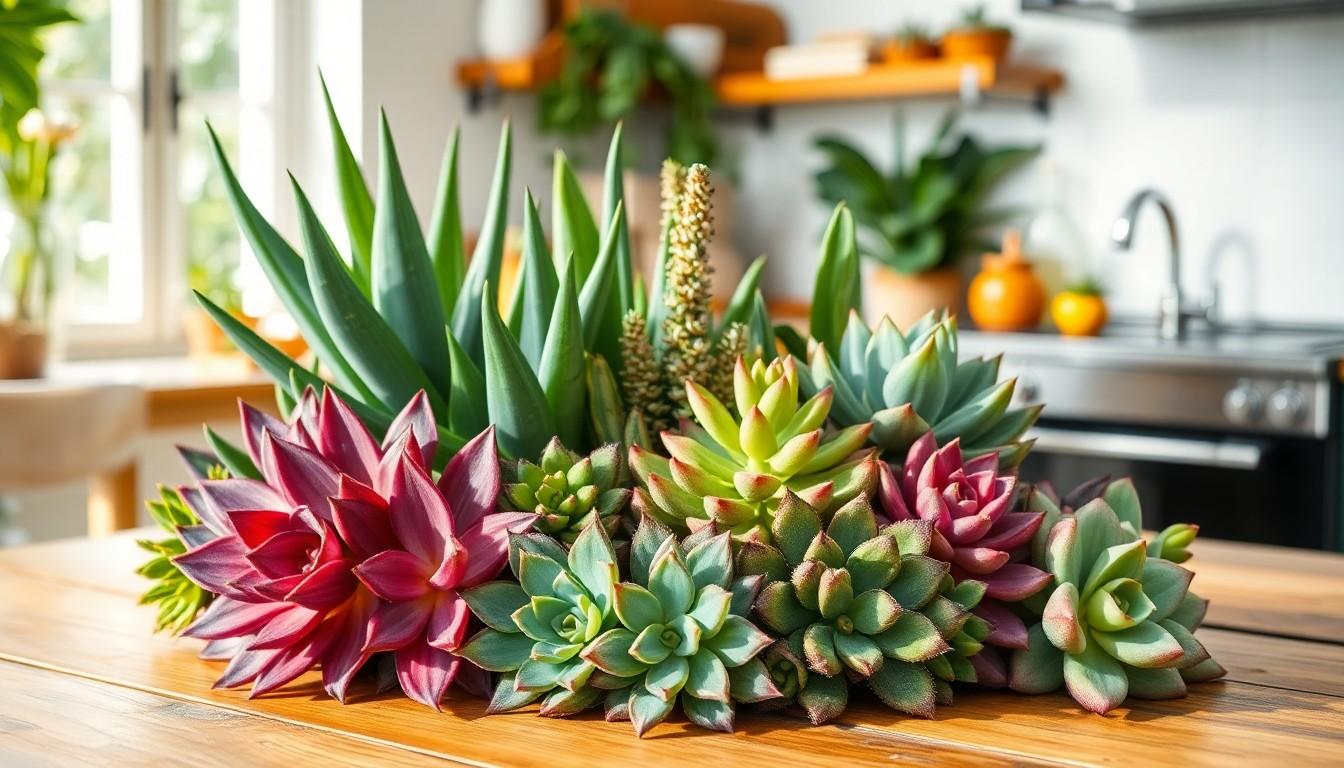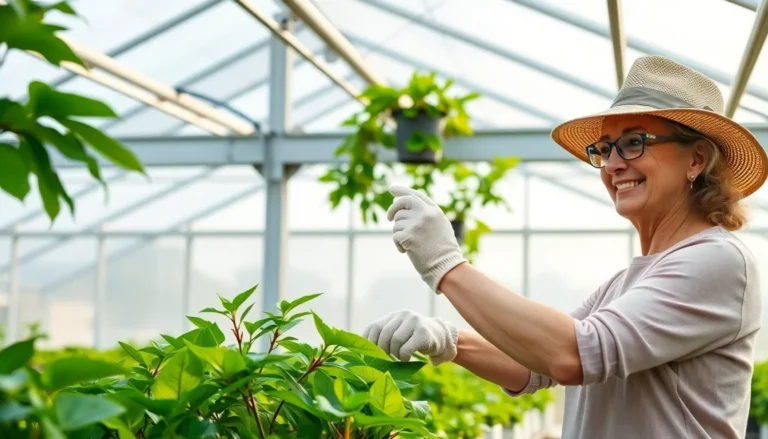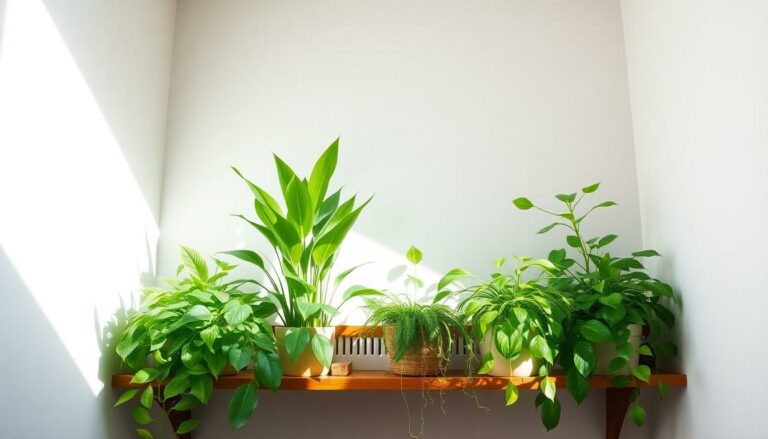The Best Fluffy Pancakes recipe you will fall in love with. Full of tips and tricks to help you make the best pancakes.

Edible Succulents: Discover Unique Flavors and Health Benefits You Can’t Miss
Imagine biting into a plant that looks like it belongs in a desert but tastes like a culinary delight. Edible succulents are shaking up the food scene, proving that not all plants are just for decoration. These quirky, fleshy wonders are not only packed with flavor but also bring a splash of creativity to any dish. Who knew that a little greenery could be so tasty?
From the sweet and tangy taste of prickly pear to the refreshing crunch of ice plant, edible succulents are a feast for the senses. They’re not just good for your plate; they also boast impressive health benefits. So why not dive into the world of these unique plants? It’s time to elevate your meals and impress your friends with your newfound knowledge of nature’s delicious little secrets.
What Are Edible Succulents?
Edible succulents refer to a diverse group of plants characterized by thick, fleshy leaves or stems that store water. Many of these plants feature unique textures and flavors, enhancing various culinary creations. Plant varieties such as prickly pear, ice plant, and sedum commonly fall into this category.
Prickly pear offers both its colorful fruit and pads, which can be used in salads or as a natural sweetener. Ice plant boasts a slightly salty flavor and adds a crispy element to dishes, often served as a garnish or in salads. Sedum varieties, although less common in culinary usage, contribute a delicate crunch to meals.
Health benefits accompany the consumption of these succulents. Rich in vitamins and minerals, they provide antioxidants that support overall well-being. High fiber content aids digestion, making these plants a nutritious addition to any diet. They often contain minimal calories, aligning with health-conscious eating.
Agricultural methods help these plants thrive in arid conditions, making them sustainable options for consumption. Their adaptability to dry climates and minimal water requirements contribute to their growing popularity in global cuisine. Chefs and home cooks alike appreciate the versatility of edible succulents, prompting exploration in various dishes worldwide.
Exploring these edible plants opens doors to creativity in the kitchen. Novel flavor profiles and textures help elevate dishes, impressing guests with unique offerings. Their use in modern recipes highlights a shift towards incorporating unconventional and health-focused ingredients.
Popular Types of Edible Succulents

Edible succulents come in various types, each adding distinctive flavors and textures to dishes. Here’s a closer look at some popular varieties.
Aloe Vera
Aloe vera is renowned for its gel-like substance found in its leaves. The gel has culinary uses, often included in smoothies and desserts for its mild flavor and texture. Nutrient-rich, aloe vera contains vitamins A, C, and E, alongside essential amino acids. Its health benefits support digestion and hydration, making it a popular choice in healthy cuisine. Many find its versatility appealing, as it pairs well with fruit and yogurt.
Nopales (Cactus Pads)
Nopales, or cactus pads, are commonly used in Mexican cuisine. Their slightly tangy flavor complements dishes like tacos and salads. Rich in fiber and packed with vitamins, nopales contribute to heart health and blood sugar regulation. Cooking methods can vary from grilling to sautéing, enhancing their taste and texture. Nopales offer a unique crunch that elevates meals while providing incredible health benefits.
Purslane
Purslane stands out with its succulent leaves and mild peppery flavor. Often regarded as a weed, this plant is a nutritional powerhouse, boasting high omega-3 fatty acid content. Its tender leaves, commonly added to salads and sandwiches, provide a refreshing crunch. Utilizing purslane in dishes increases vegetable intake effortlessly. Many appreciate its ability to thrive in various conditions, making it an accessible addition to gardens.
Stonecrop
Stonecrop refers to various Sedum species, known for their succulent leaves and unique flavors. These plants are often used fresh in salads or as garnishes, adding a subtle sweetness. Rich in antioxidants, stonecrop supports overall well-being, promoting a healthy diet. Gardeners appreciate their hardiness, as they tolerate drought and poor soil conditions. Culinary enthusiasts enjoy experimenting with different Sedum varieties to create visually appealing and nutritious dishes.
Nutritional Benefits of Edible Succulents
Edible succulents offer significant health benefits, making them valuable additions to diets. Their variety of vitamins and minerals supports overall well-being.
Vitamins and Minerals
Edible succulents like prickly pear, aloe vera, and nopales provide essential nutrients. Vitamin C, found in prickly pear, boosts the immune system. Aloe vera delivers vitamins A, C, and E, promoting skin health. Nopales supply magnesium and potassium, which are crucial for proper nerve function. Calcium content in succulents aids bone strength. Each of these nutrients contributes to maintaining health, validating the nutritional appeal of including these plants in meals.
Antioxidant Properties
Antioxidants play a pivotal role in neutralizing harmful free radicals in the body. Prickly pear showcases a rich supply of flavonoids and carotenoids, enhancing its antioxidant capacity. Aloe vera includes numerous antioxidants that protect cells from damage. Purslane, recognized for its omega-3 fatty acids, also offers antioxidant benefits that reduce inflammation. Together, these properties help combat oxidative stress, promoting better health and wellness through regular consumption of edible succulents.
How to Prepare and Cook Edible Succulents
Preparing edible succulents involves straightforward techniques that enhance their unique flavors. These plants require minimal effort to incorporate into dishes, allowing for creative culinary applications.
Raw Preparations
Raw preparations highlight the fresh, vibrant taste of edible succulents. Prickly pear pads, once thorns are removed, can be sliced thin for salads. Ice plant leaves add a salty crunch when mixed into fresh vegetable platters. Purslane’s mild peppery flavor makes it an excellent addition to sandwiches. Incorporating aloe vera gel into smoothies offers hydration alongside sweetness. Sedum varieties can be chopped and sprinkled over dishes for an added texture. Mix and match these succulents to create vibrant, nutrient-rich meals that tantalize the palate.
Cooking Techniques
Various cooking techniques unlock different flavors and textures in edible succulents. Sautéing nopales provides a delightful tang that pairs well with spices. Roasting prickly pear in the oven caramelizes its sugars, enhancing sweetness. Steaming ice plant quickly retains its crispy texture, making it ideal for stir-fries. Blending aloe vera into soups adds both creaminess and nutrition. Grilling purslane enhances its flavor profile while giving a smoky element to the dish. Experimenting with these techniques ensures an exciting exploration of edible succulents in everyday meals.
Culinary Uses of Edible Succulents
Edible succulents add unique flavors and textures to various dishes. Known for their versatility, succulents like prickly pear and ice plant elevate salads, appetizers, and main courses. Prickly pear offers colorful fruit that enhances desserts and brightens salads. Ice plant contributes a slightly salty flavor, making it an excellent addition to seafood dishes.
Preparation methods for these succulents allow for creativity in the kitchen. Slicing prickly pear pads creates a fresh, crunchy element for salads. Nopales, with their tangy flavor, pair well with grilled meats and other vegetables. Cooking methods such as roasting or sautéing can transform their flavors, making them suitable for any occasion.
Experimenting with edible succulents leads to nutrient-rich meals. Aloe vera’s gel-like substance blends smoothly into smoothies, contributing both flavor and health benefits. Purslane’s mild peppery taste works well in sandwiches and green dishes, providing a source of omega-3 fatty acids.
Merging different edible succulents enhances culinary experiences. Using stonecrop in desserts adds a subtle sweetness and beneficial antioxidants. By incorporating a variety of these plants, chefs can create visually appealing and wholesome meals.
Embracing edible succulents helps diversify ingredient choices in everyday cooking. Their rich nutrient profiles support overall well-being, encouraging healthy eating habits. Incorporating these ingredients opens doors to creativity, making meals enjoyable and satisfying.
Conclusion
Edible succulents are more than just a culinary trend; they’re a gateway to new flavors and health benefits. With a variety of options like prickly pear and aloe vera, these plants offer unique textures and tastes that can elevate any dish. Their nutritional value makes them a smart choice for anyone looking to enhance their meals while supporting overall well-being.
As more chefs and home cooks explore the versatility of these succulent ingredients, the possibilities for creative cooking continue to expand. Embracing edible succulents not only diversifies culinary experiences but also promotes sustainable eating habits. It’s time to get adventurous in the kitchen and discover the delightful world of edible succulents.




